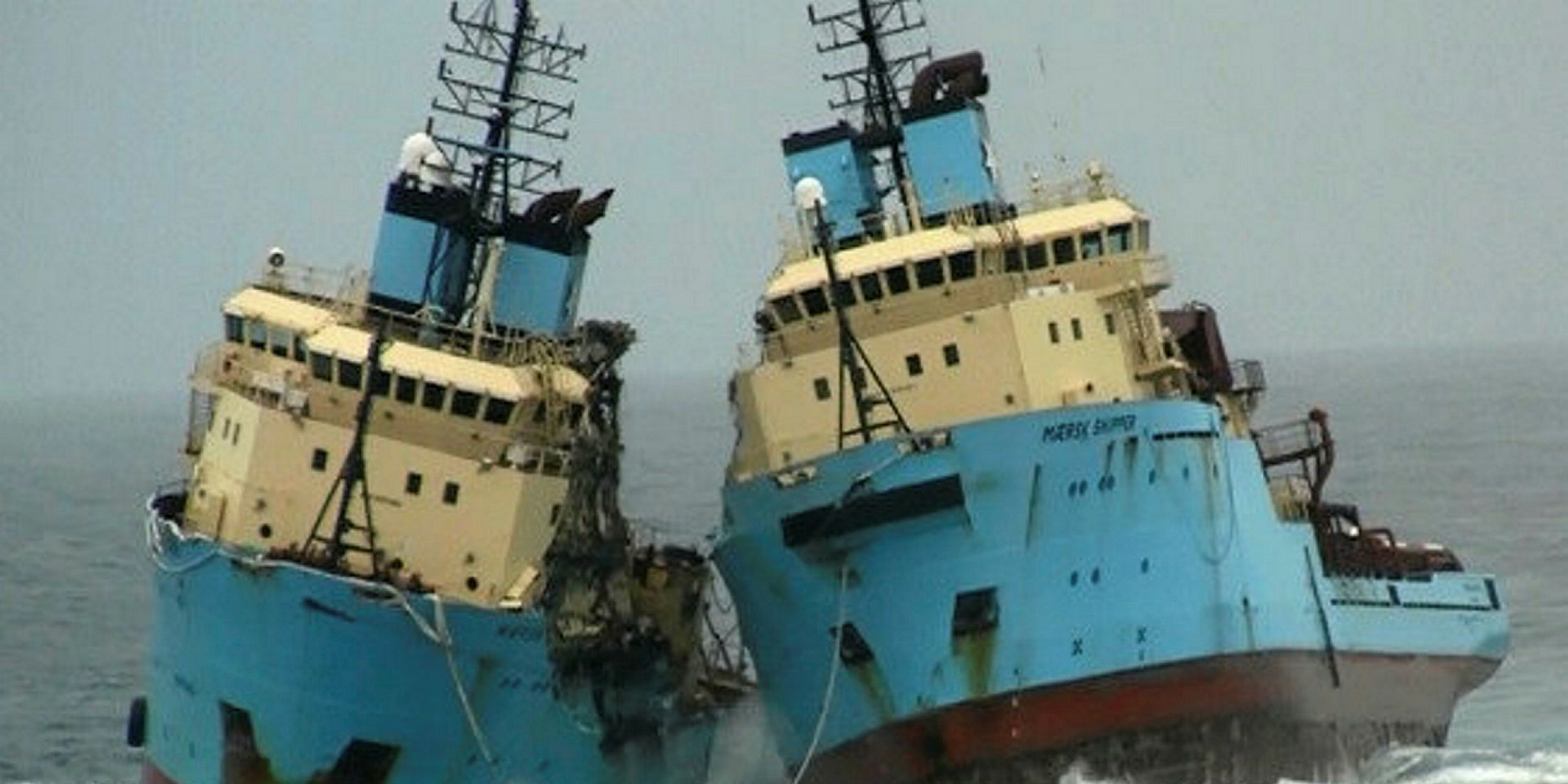The failure of three fenders precipitated a chain of events that ultimately resulted in the sinking of two Maersk anchor handlers off France last year, according to a report into the incident by the Danish Maritime Accident Investigation Board (DMAIB).
The Maersk Searcher and Maersk Shipper (both built 1999) capsized and sank in the Bay of Biscay on the night between 21 and 22 December 2016 while en-route to Turkey for scrapping.
“During the passage of the English Channel, the fenders between the ships on tow failed, and the ships started to interact,” the DMAIB said.
“This caused damage to the ships’ superstructure, which eventually compromised Maersk Searcher’s watertight integrity and led to water ingress.
“The Maersk Searcher eventually capsized and sank, and subsequently the Maersk Shipper was pulled under.”
The crew on the Maersk Battler (built 1997), which was carrying out the tow, was able to carry out a controlled breakage of the towing wire, and were able to free themselves from the foundered towage.
The DMAIB found that while the loss of fenders, collision and flooding of the unmanned ships under tow had been addressed in a risk assessment, and that risk mitigating initiatives were in place for each risk item, these initiatives were “ineffective”.
It concluded that the risk mitigating strategies were mainly focused on preventing risk factors in isolation and left “little or no contingency” for acute interaction between the risk factors.
However, the report also calls into questions whether the fenders eventually deployed for the towage operation were suitable for the task.
The DMAIB report said that the departments planning the operation had identified a need for “a minimum of three fenders with a diameter of no less than 3 metres and a length of 4-5 metres”.
However, the report says it was soon realised that fenders of the specified dimensions were “difficult” to locate and “expensive” to buy or rent.
One of the company’s suppliers is said to have had three fenders of a smaller type available for rent, with a diameter of 2.3 metres and a length of 4 metres, at a “significantly lower price” than those originally requested.
The DMAIB report says that “some concerns were raised within the operations department as to whether the smaller fenders were acceptable”, but that the cheaper and smaller fender type was chosen.
It then claims that “no recalculations or considerations were made” to assess whether the reduction in fender size would have an impact on the towing setup and the risk assessments.



